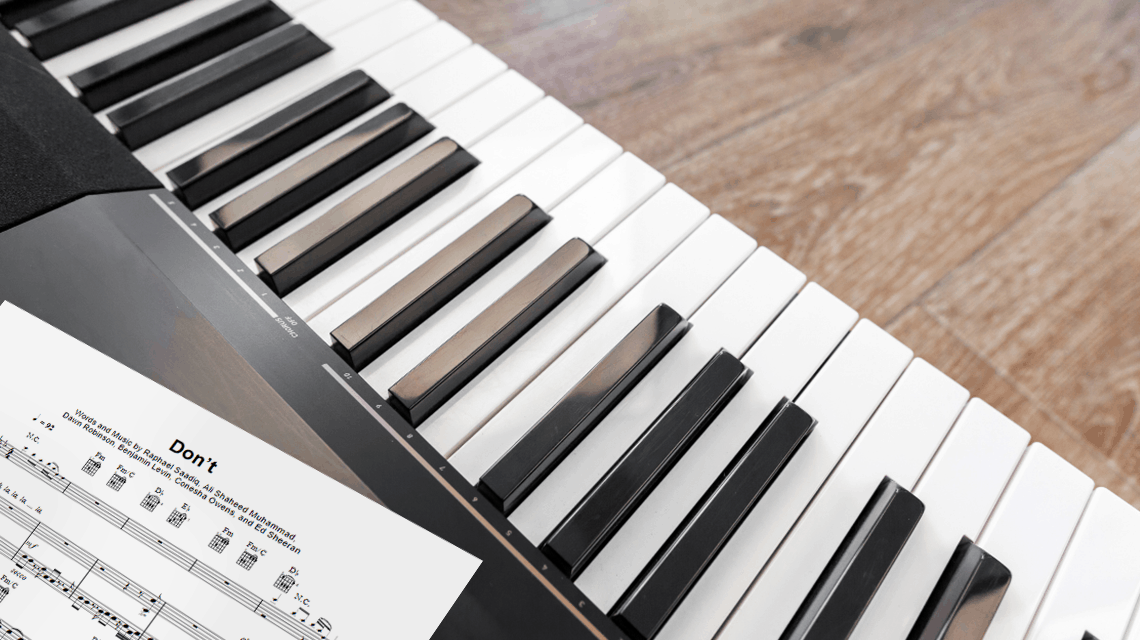5 Things Not To Do When Learning The Piano
Getting started learning the piano seems pretty straightforward, but there are a number of common mistakes that piano teachers see over and over again with new students. It may not seem obvious to new piano learners that some of these things can really hinder progress at the piano. To set yourself

Getting started learning the piano seems pretty straightforward, but there are a number of common mistakes that piano teachers see over and over again with new students.
It may not seem obvious to new piano learners that some of these things can really hinder progress at the piano.
To set yourself or your child up for success, consider these things as you are preparing to start learning the piano.
Here are 5 common mistakes to avoid when you’re starting out on the piano.
1. Learning On A Poorly-Maintained Instrument or Small Keyboard
Many people assume that as long as they have an instrument with keys, it will do. But, playing on a low-quality instrument can lead to big problems and a lot of frustration.
Acoustic pianos require regular maintenance and tuning. They have a lifespan of about 60 years. If you have a family heirloom piano, or if your piano has been sitting in your home unplayed for many years, it may not be an ideal instrument to learn on.
Before learning to play the piano, you should have your piano looked over by a piano technician. (You can find one in your area at ptg.org.)
A piano technician can make sure that all of the keys, pedals and moving parts are in working order and that the piano can stay in tune.
If something isn’t working properly or if the piano sounds unpleasant to play, you can imagine how frustrating it would be to try to practice regularly and make good progress.
Similarly, if you will be practicing on a keyboard or digital piano, you’ll want to make sure it has 88 full-size weighted keys. You want the keys to feel fairly authentic to acoustic piano keys so that you can learn to control the sound as you play.
Playing on an instrument that is too small or with inadequate keys can be really confusing and disorienting. It will be really hard to play on a “real” piano in the future.
Learning on a small keyboard can be compared to learning to play soccer with a balloon. It just wouldn’t feel right and can lead to a lot of frustration.
Also, if you are learning on a keyboard, make sure you have a proper stand with the keyboard at the correct height. Don’t try to play your keyboard by placing it on a bed, coffee table, dining table or other random surfaces in your home.
2. Using A Chair Instead Of A Piano Bench
It’s not uncommon for piano students to use any chair from their house in the place of a piano bench. This might not seem like a very big deal, but it can be really problematic.
Standard piano benches have a completely flat seat and come in a standard height. When you sit on a piano bench from the beginning of your piano study, you learn just the right posture needed to play the piano. You have a solid base to work from and learn to expect what feels “normal” at the piano.
On the other hand, chairs come in all different shapes, sizes and heights.
Many chairs slope towards the back, which makes it really hard to sit up tall with correct posture at the piano.
A chair with arms can be really messy to work with. If a chair is too high or low, a piano student has to compensate and reach their arms to the keys in an unnatural way.
If a chair rocks, swivels or moves in any sort of way, it will create a lot of instability.
As you can see, it’s just easiest to get started the right way using a real piano bench.
3. Labeling Your Piano Keys
It’s pretty common to see products to label the letter names on piano keys. You might see stickers that go directly on the keys or cardboard inserts that can be placed behind the keys.
Some people even create their own labels by writing directly on the keys (😬), or sticking tape or some other kind of stickers on the keys.
While this might seem helpful at first, it actually prevents piano students from really learning the keys well.
It’s completely normal to get mixed up while learning the piano keys. In fact, struggling to remember which key is which is an important part of the learning process. In that struggle, most people discover ways to keep all of the keys straight.
Every once in a while, piano key labels are helpful to accommodate certain types of learners, but a piano teacher can help you figure out if that’s a necessary step for you. In general, most people end up figuring out which key is which over time and it’s ok if it takes a while.
4. Learning Music That Is Too Hard
Many people start learning piano with the goal of playing a specific song or style of song. It is great to start out with a strong vision for what you hope to do, but it is also really important to respect the entire process of learning how to play the piano, especially the beginning stages.
If you don’t have any piano experience, definitely start at the beginning and follow all of the steps recommended to learn the piano. Don’t try to take shortcuts or play complex music too soon.
There are a lot of technical skills that need to be acquired at the piano. Learning to read music and getting comfortable on the piano keys can be a long process. Be patient with yourself and enjoy the entire learning process.
5. Lacking Organization
A lot of piano teachers see their students lack progress simply because they aren’t organized. This is really unfortunate because this is an easy fix and something that can be avoided.
As you’re getting started, find a good system for keeping track of all of your books and papers.
If you have loose papers, keep them secure in a binder so that they don’t slide off your piano, get lost in between pages of a book or fly away on the way to your piano teacher’s house.
Have a place to keep all of your most important piano books near your piano. If you leave for a weekly lesson, make sure to bring your books right back to the piano when you get home. Books that stay in a car for a week or a part of a week will never get played.
📱💻 Keep track of all your sheet music arrangements by downloading one of the free Musicnotes apps!
🎹 Piano arrangements are available on the Musicnotes website.

